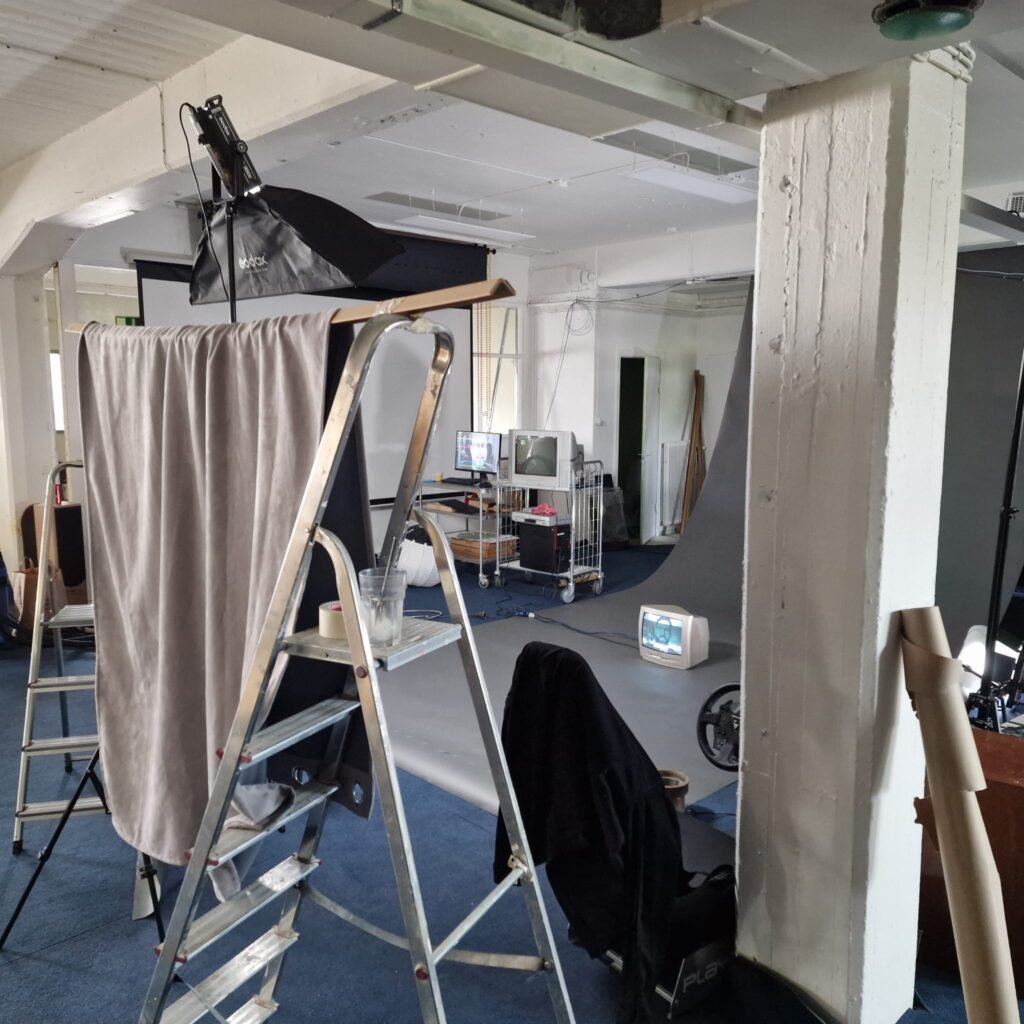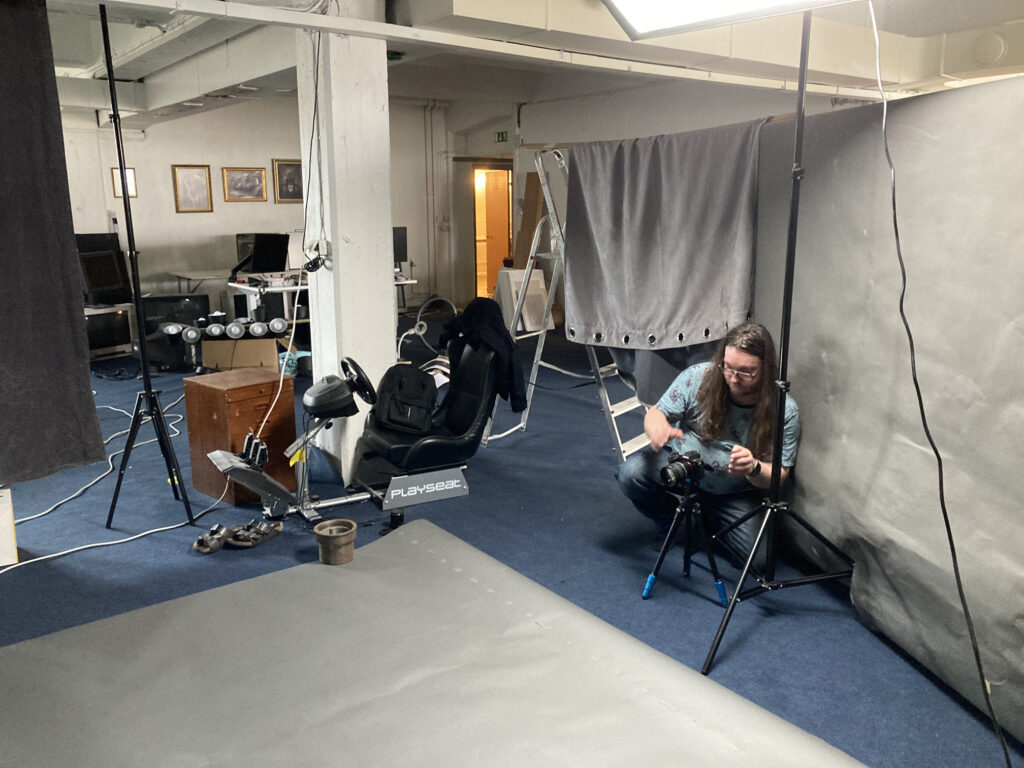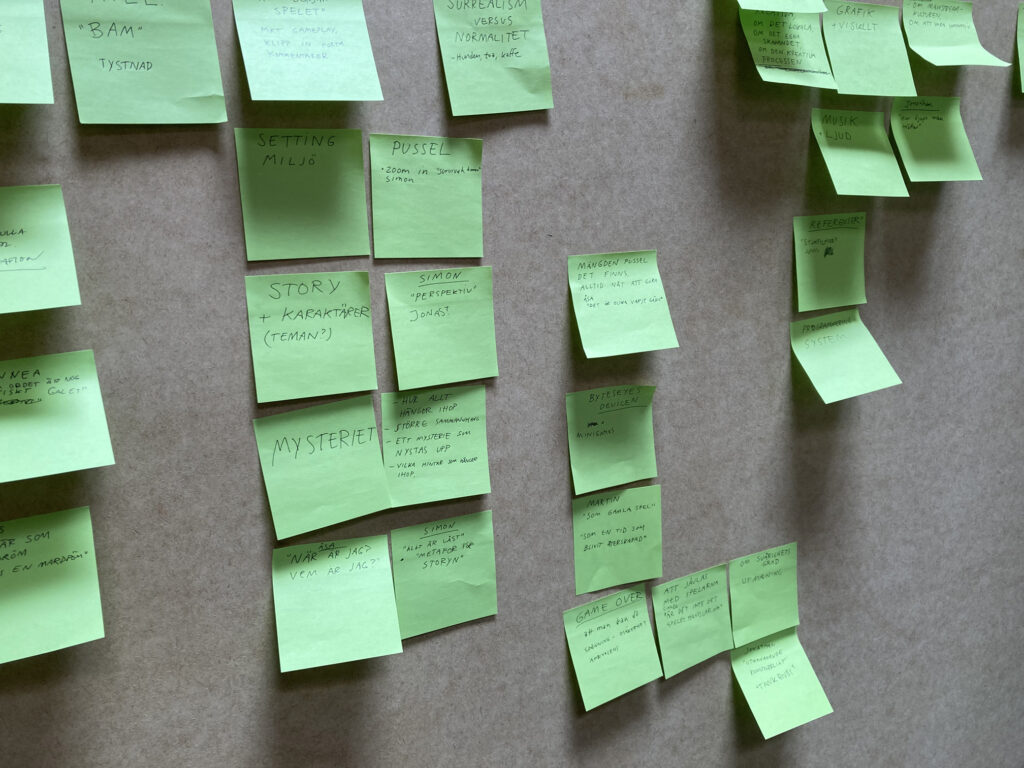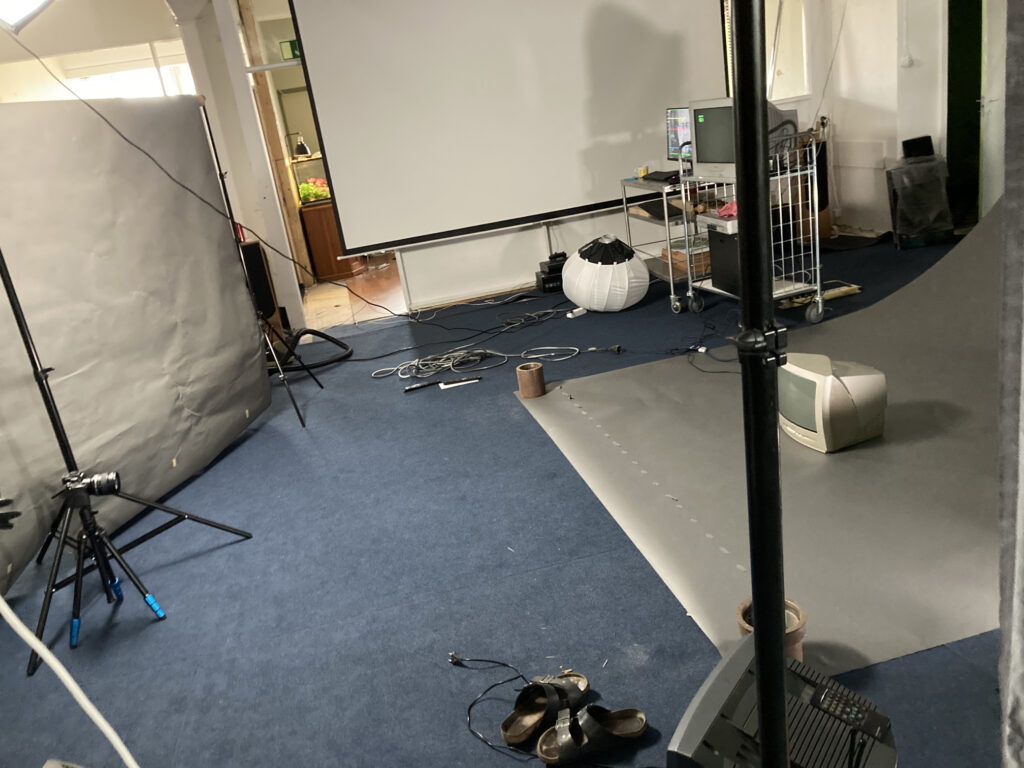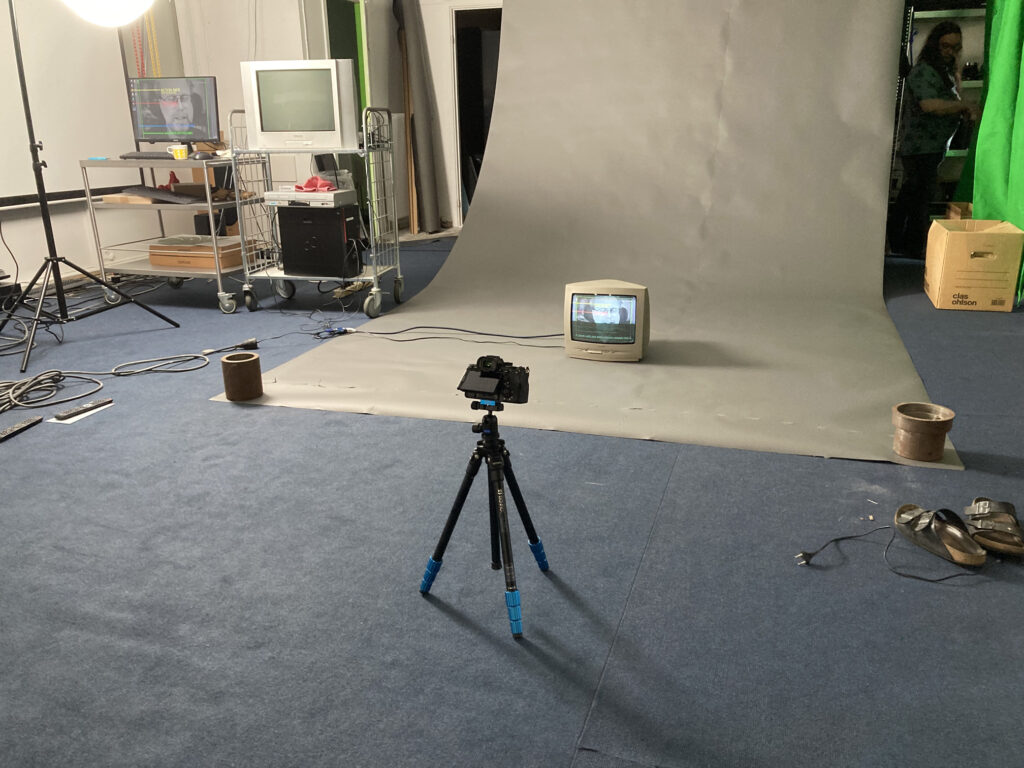
Through The Laser Eyes
In early 2024 we started to think about how we could explain what Lorelei and the Laser Eyes is. We had only released trailers which focused more on vibe, so we started throwing around ideas for videos that would more clearly communicate what the gameplay is like. We decided that the release date trailer should be filled with lots and lots of gameplay clips, and that we should make one more longer form video. Videos in which the developer explains their games has become common, but we weren’t too keen on creating a video in that style. We thought instead that if we could get someone to ask us about the game, then it would result in something that would feel more like a conversational piece.
We got in touch with Emil Bengtsson, who had previously helped us with the live-action segment of the maze trailer

We gave loose instructions to Emil on how he should conduct interviews, merely telling him that we wanted the video to try and explain what the game is, and not being a strict behind the scenes video. Emil went for a holistic, humouristic and philosophical approach with his questions, which would result in a video that would feel more contemplative and reflective, rather than explicit and demonstrational. We decided to conduct the interviews in Swedish, as it would allow the team to speak more natural and spontaneous, and we thought adding subtitles on the different screens would create a visual similarity to the game.
Emil had gathered over 10 hours of footage, and started cataloging everything into categories. The editing took a lot of time, and a lot of great comments had to be scrapped, as we worked together to try and find a flow of the narrative in the editing. Emil and Simon then filmed the entirety of the finished film again, and again, and again, on all the ten different screens over two days in Emil’s studio. It was a lot of work with carrying heavy screens, and technical challenges finding the right cables to output video to such a big variety of old screens and inputs.
Daniel Olsén mixed the final sound, and it took a lot of tuning and effort to make all the voices and different recording environments feel cohesive, and give them the same lo-fi feeling as the footage.

